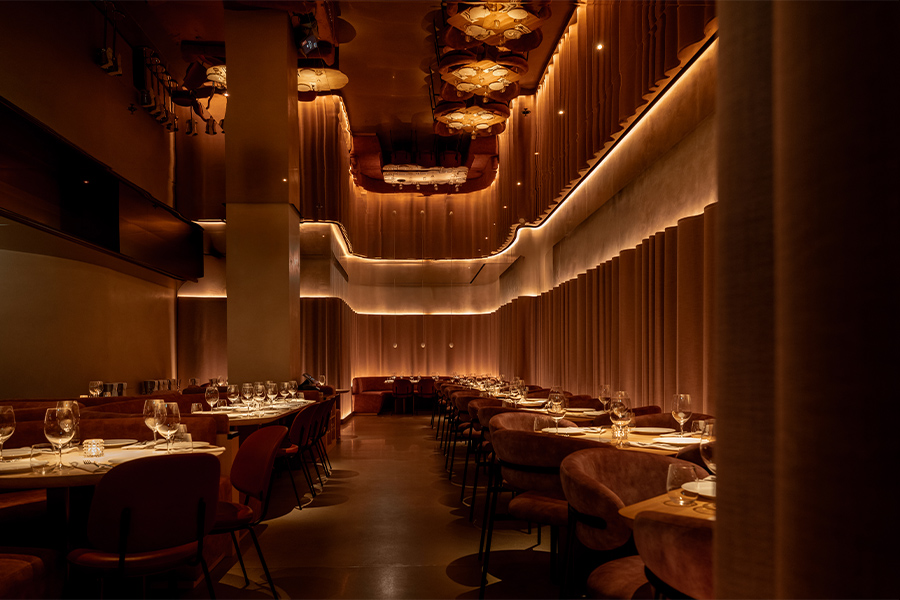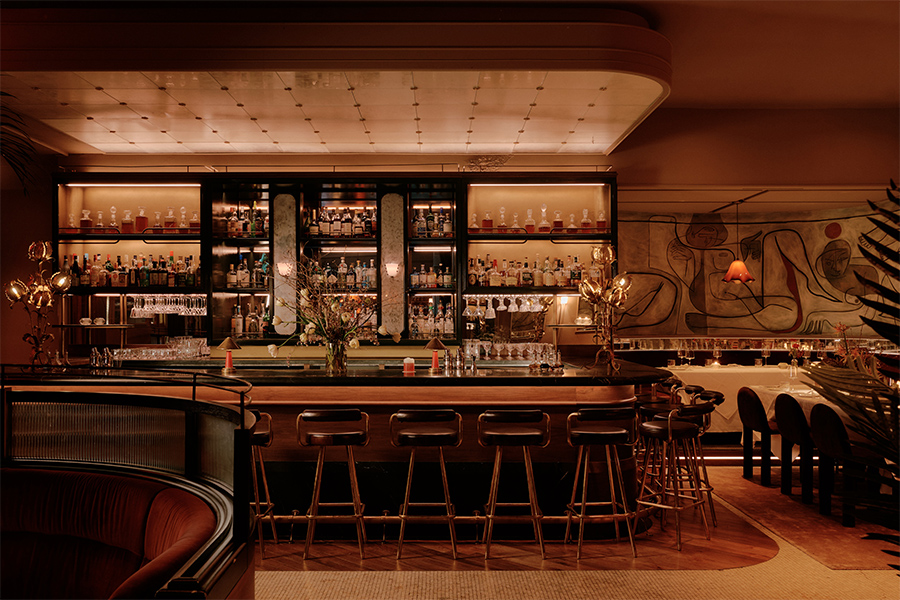The challenge of designing a space from a distance fell to Princeton, New Jersey-based Joshua Zinder Architecture + Design (JZA+D), which completed the Moonlight Food Market in the Sands Macao casino resort in China. “Imagine doing the documentation and design work from the other side of the world,” says Joshua Zinder, JZA+D’s founding partner. “It’s all about having a level of trust between us and the client.”
Having worked with the property’s owner, Las Vegas Sands Corporation, on several other projects, the team already had an idea of what the redesign should look like. The existing noodle house, which opens up directly onto the casino floor, needed to flow into the outside area and draw people into the space. “In general, our goal was to do something that was simple and modern that at the same time connects to the Chinese audience,” says Marlyn Zucosky, partner and director of interior design at JZA+D.

The notion of the moon and its cultural associations fulfilled these aspirations. To indicate circulation, the wood porcelain tile floors are split into large gray stone walkways that mimic garden paths. Immense moon gates align with the paths for a dramatic effect. “In Chinese culture, the moon gate acts as a separation between public and private spaces,” says Zucosky. “It’s a welcoming gesture.” Surrounded by red brick and opening into the dining space, the curved archways create the exterior statement the team was looking for.
The gates, which encircle the outside of the restaurant, offer glimpses into the interior. “Part of the idea of the moon gates around the perimeter is that it creates that separation,” explains Zinder. “From the outside, the restaurant will always seem like it’s filled.” Made of locally sourced stones and internally lit, the gates shimmer with red and golden hues and are set off by the neutral stones that outline them.

Latticework screens divide the host area from the main dining space. These wooden partitions recall traditional Chinese design and pair with a porcelain plate display in the entranceway. Inspired by a classic Chinese tea set, the team finished the plates with the same red and gold tones. “Those are lucky colors,” says Zucosky. “People associate wealth and prosperity with them.”
The large seating space inside the main dining area houses simple wood tables and a variety of chairs-some with a back and arms and others with only the stool portion. “The idea came from the owner, who felt very strongly that most of his clientele don’t sit for long periods of time,” explains Zinder. “They just want to feel like they can get a good meal.” The simple style still offers a comfortable seat with faux leather cushions.

The restaurant’s ceiling boasts a dramatic light display showcasing the eight phases of the moon. “It’s illuminated to give it this wonderful depth of color and glow,” says Zucosky, adding that it showcases the concept of the sky as a circular element. Made of simple wood boxes, the fixtures transition from a full moon to a new moon against a dark blue background. “The moons and moon gates are such a simple form, but because it’s repetitive, it’s really powerful,” says Zucosky.



